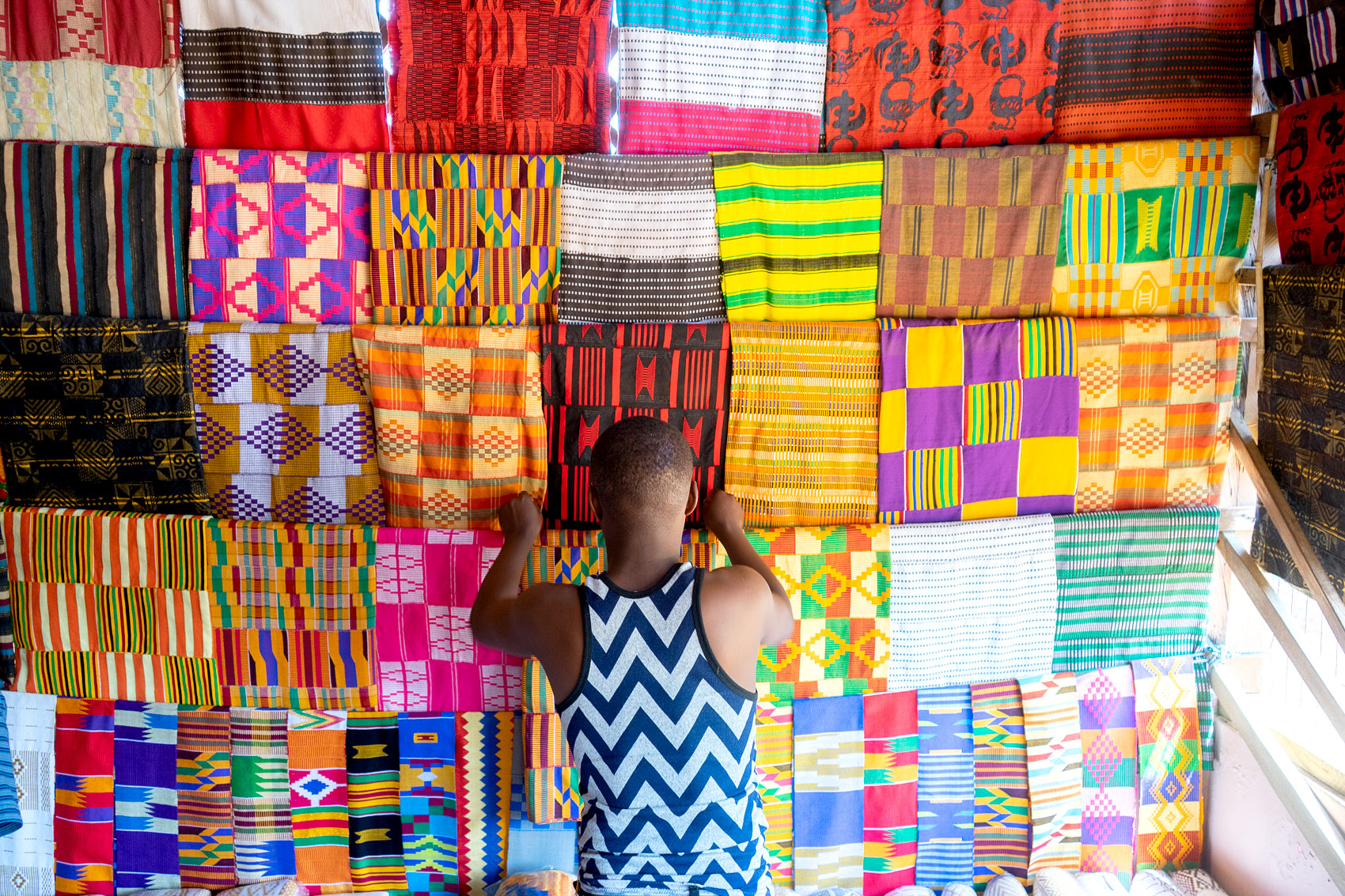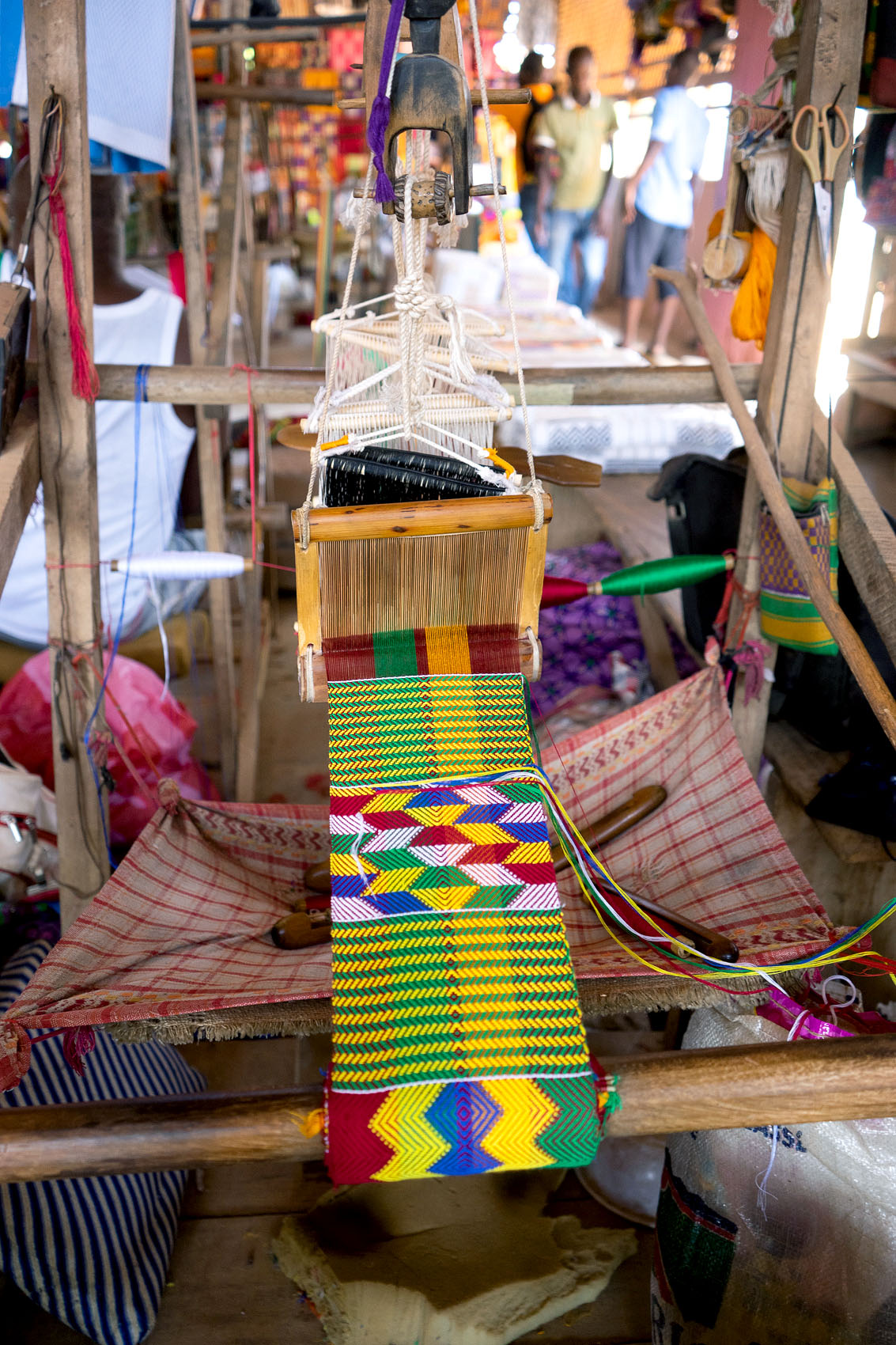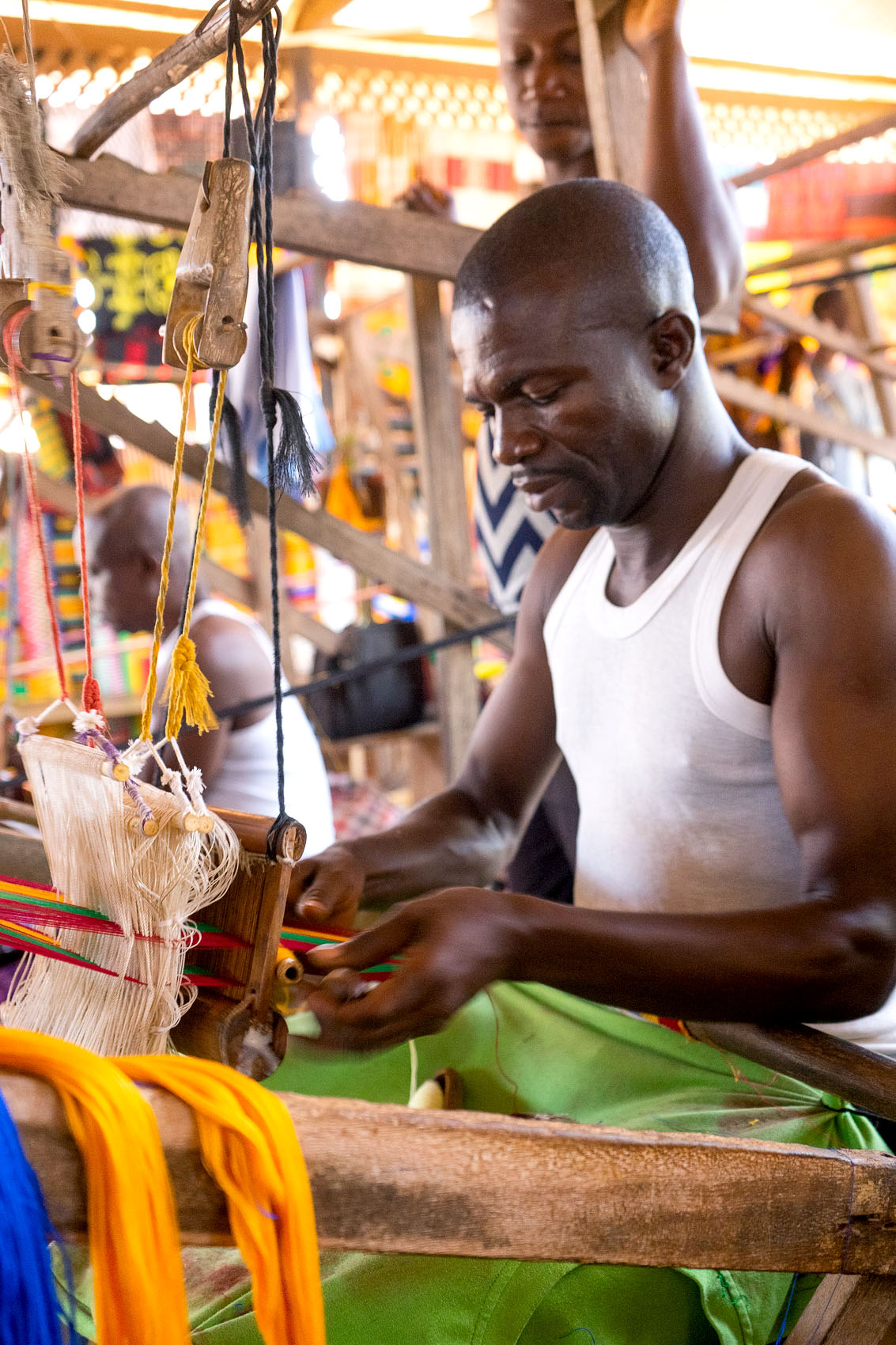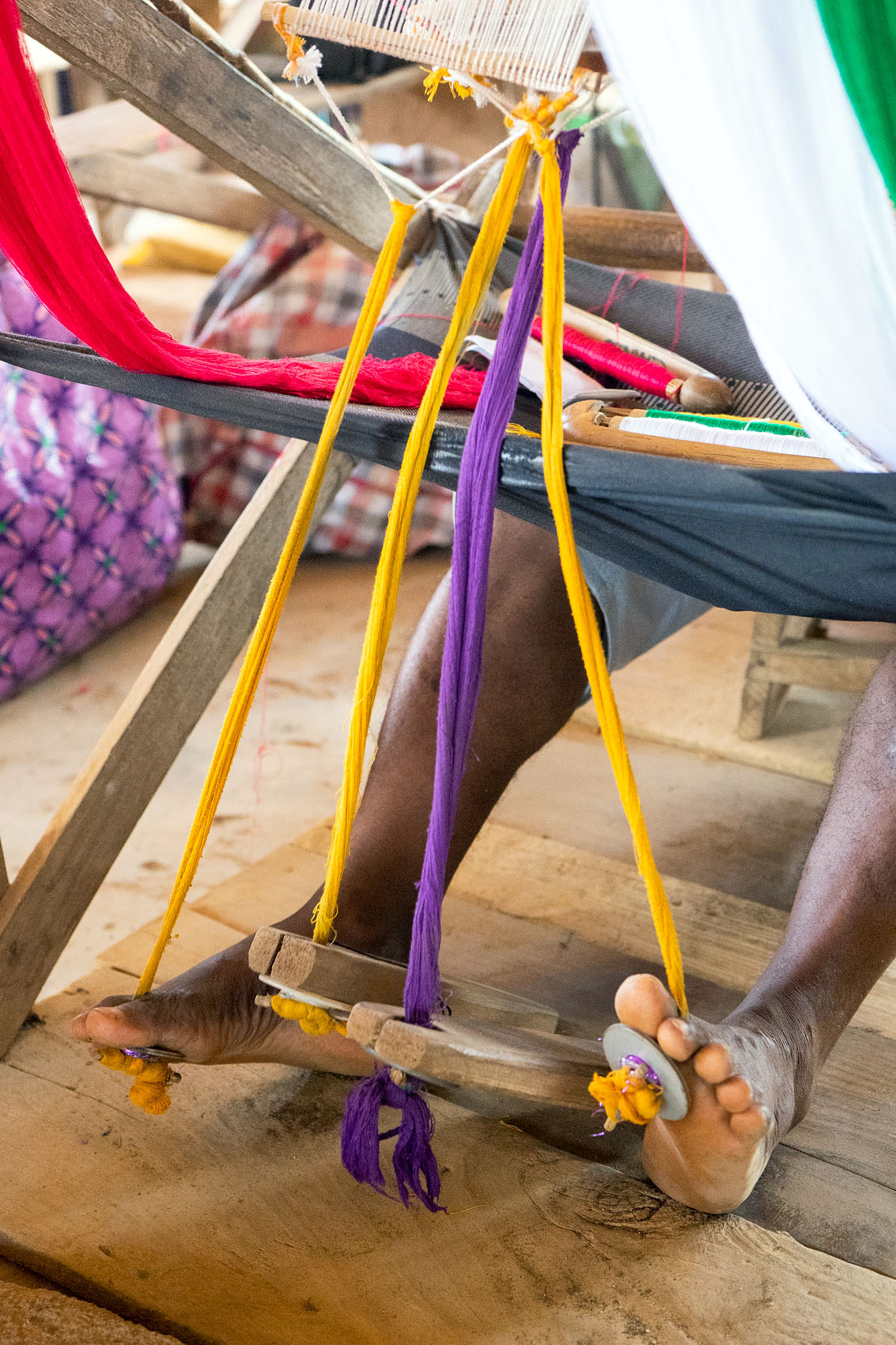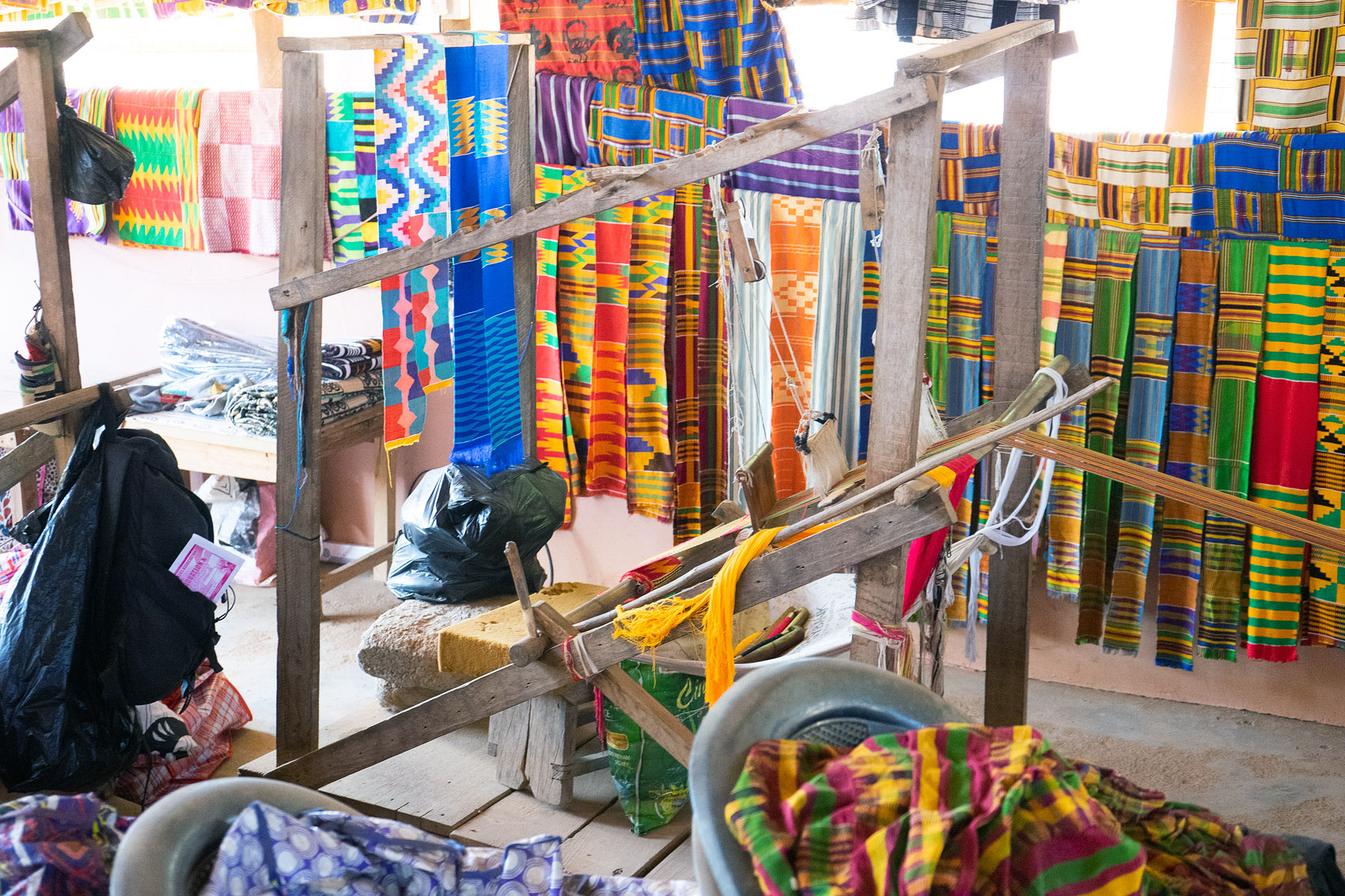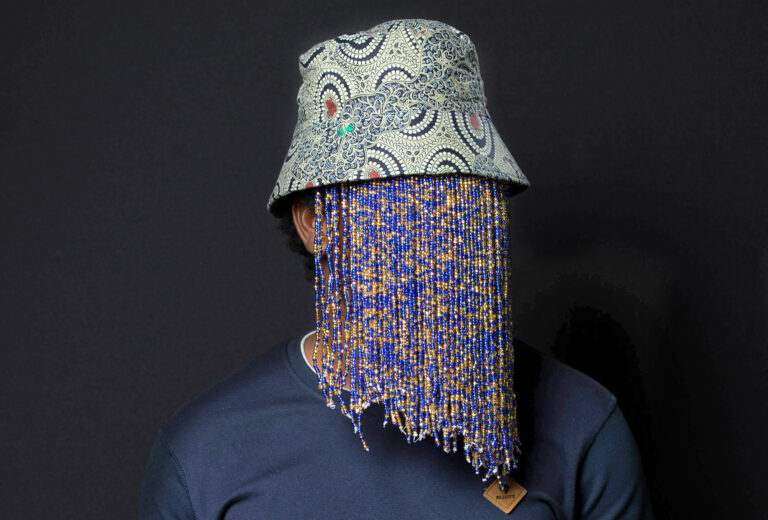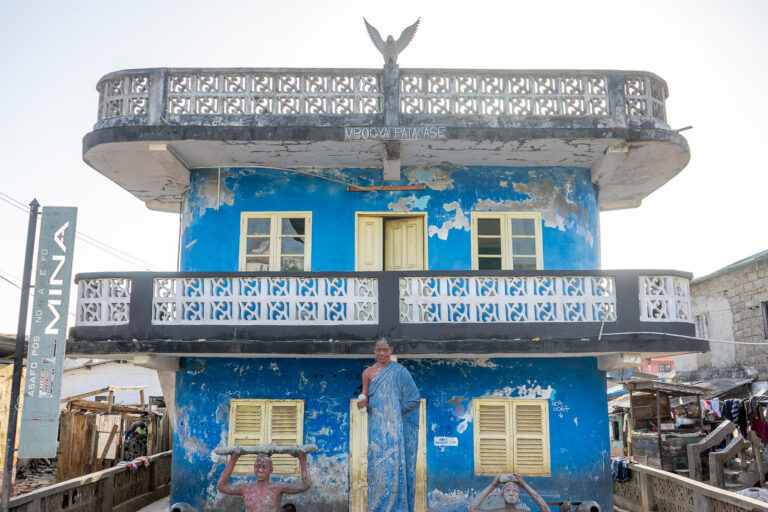Kente Weaving in Bonwire
On our first weekend in Kumasi, we decided to head out of the city and explore some of the towns which lay to the east. Our first stop was in the village of Bonwire, famous across Ghana for the production of the colorful cloth known as kente.
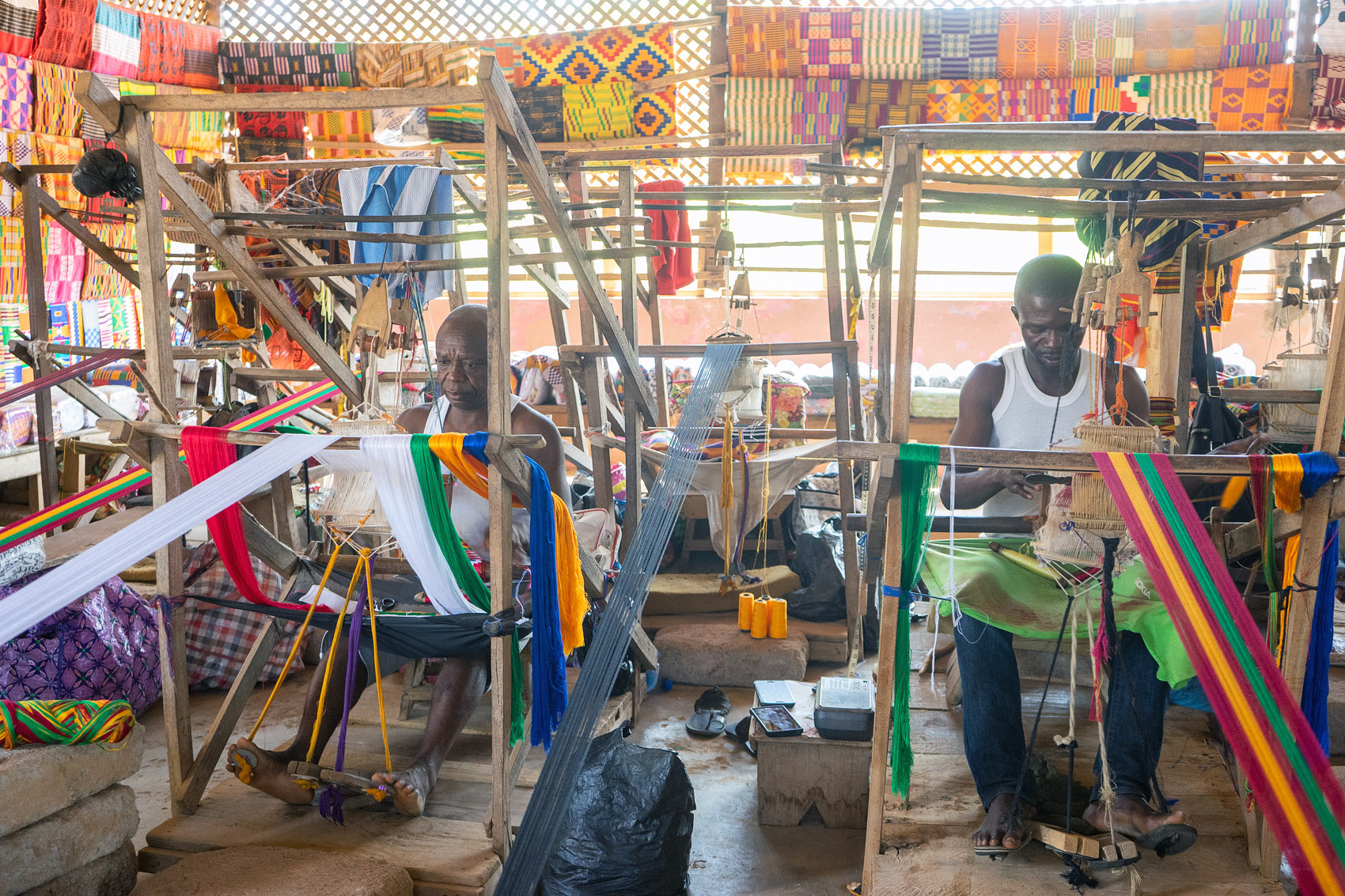
As soon as we got out of the trotro in Bonwire, we were approached by guides. It seems there’s exactly one reason for foreign faces to appear in this town — and that’s “kente”. Without even bothering to ask what we were there for, a guy indicated that we follow him. He brought us to the town’s main production hall, and gave us a quick tour. It was so efficient and straightforward, it didn’t bother us not to have any choice in the matter. And the guy was super-nice.
(By the way, good luck if you ask for directions to “Bon-wire”. The town’s name is pronounced closer to “Bon-ray”, and nobody will understand if you say it the way in which it’s spelled. We spent a very frustrated five minutes at the tro-tro station saying “Bonwire“, until finally giving up and saying where they make kente. “Oh, Bon-ray! Why didn’t you say so?!”)
Kente Weaving Video
Historically, kente has been clothing for Ashanti royalty and special occasions within the kingdom, but it’s become popular all across Ghana and is no longer so elite. There are different grades, from single- up to triple-weave, and the most complicated designs can fetch an incredible price. Each pattern and each color has special significance, and there still exists styles of kente which only the king is permitted to wear.
It was fun to watch the men weave kente on machines which were surely decades old. And I do mean “men”: this is a craft practiced solely by male members of the community, and one that’s passed down father to son. The looms are large contraptions, where the colorful threads are tied to a stone meters away, and slowly worked into their patterns with a system of foot pedals and shuttles.
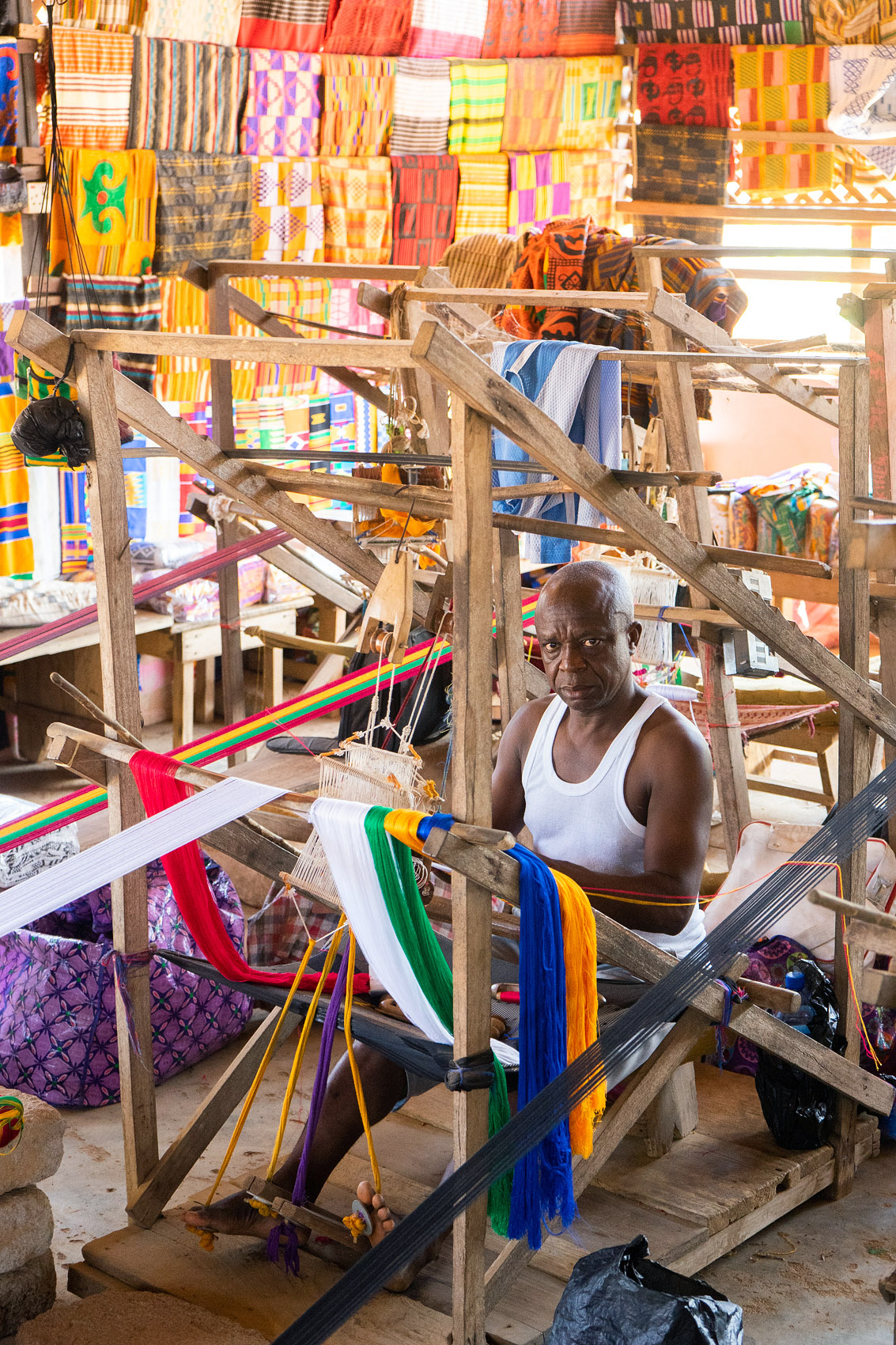
Naturally, we had to buy some kente while here — though we bought it to decorate our table back at home, rather than our bodies. It’s a beautiful fabric, and on the rare occasions when we did see someone in Kumasi wearing a heavy kente cloth, thrown over one shoulder and wrapped about the waist, it always looked striking. Nice for them, but I don’t think it would be a great fashion choice for us.
More Kente Weaving Photos
Most images and videos can be licensed for commercial and editorial use, please contact us to find out more.
